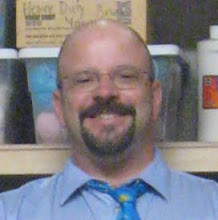
Tiffany Peden, a reporter from the Daily Review came to visit last Thursday. She wrote a really nice article about the multicultural projects Mr. Malloy has been doing. The article was in today's paper. Here's the article:
Art for art’s sake in Athens
BY TIFFANY PEDEN
STAFF WRITER
Published: Saturday, October 4, 2008 3:22 AM EDT
ATHENS — The students at Lynch-Bustin Elementary School have been learning about different cultures — in their art classes.
Matt Malloy, a senior at Mansfield University currently student-teaching in art teacher Andrew Wales’ class since the beginning of the school year, has been working on teaching students about different cultures through art.
Currently, he is working with the fourth graders in making Celtic knots, a symbol of infinity in Ireland.
“We’re trying to show them about the Irish culture,” Malloy said. “A Celtic knot is a good way to learn about it.”
Malloy gave the students pieces of paper, which they folded multiple times and cut into, similar to making paper snowflakes. The outcome was that there were numerous shapes and sizes of Celtic knots made by the students, no two the same.
“They enjoyed it,” Malloy said. “They opened their knot and they were surprised by what they made. There were challenges, but a lot of the kids were happy with the way their Celtic knot turned out.”
While the students were making the knots, Malloy said he talked with them about Irish holidays, and interesting facts about Celtic cultures and Ireland.
The students also got a chance to write in calligraphy with the Celtic knot project, writing their names in the fancy script with surprising skill.
The third graders at the school got to learn about a different culture, as they had made coil pots in art class while learning about the Pueblo culture.
Wales said that the students had just been reading about Pueblo cultures in their classroom, making the subject a perfect tie-in with shaping and decorating the coil pots.
“The subject area they learn about comes to life,” Wales said, adding that sometimes, this makes it easier for the students to learn and understand the material.
“Every culture offers different things with art,” Wales said.
Malloy said he would only be in the Lynch-Bustin art room until Oct. 22, when he said he will then be student-teaching at Towanda High School.
He’s not sure if he’ll be teaching the students at the elementary school about any more cultures before he leaves, but he said he will probably continue teaching cultures through art at the high school.
Diversity is important, Malloy said, and he said it’s important that students learn about other cultures so that they have that knowledge.
“It’s good to learn so that everyone is accepting of other cultures,” he said.
Tiffany Peden may be reached at (570) 888-9652; e-mail: reviewvalley@thedailyreview.com.




 Fourth grade classes are learning about caricatures. First I made a bulletin board with photos of both candidates and surrounded those images with caricatures of them. I asked the students, "What kind of drawing do you think a caricature is?" The definition they came up with was, "A humorous drawing that exaggerates the features of a person." Some students noticed how artists exaggerated McCain's puffy cheeks and wrinkles and other exaggerated Obama's large ears and big smile. Students then chose a candidate they wanted to make a caricature of. They turned out great!
Fourth grade classes are learning about caricatures. First I made a bulletin board with photos of both candidates and surrounded those images with caricatures of them. I asked the students, "What kind of drawing do you think a caricature is?" The definition they came up with was, "A humorous drawing that exaggerates the features of a person." Some students noticed how artists exaggerated McCain's puffy cheeks and wrinkles and other exaggerated Obama's large ears and big smile. Students then chose a candidate they wanted to make a caricature of. They turned out great!






 Now he has arms. We left one of the pores open to add Plastercraft from the inside of that area as well. We wouldn't want his arms to fall off!
Now he has arms. We left one of the pores open to add Plastercraft from the inside of that area as well. We wouldn't want his arms to fall off!







































